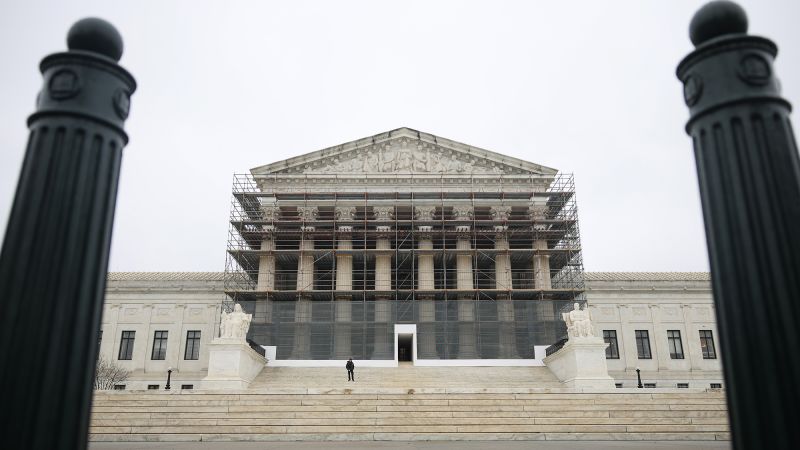On a recent Monday, the Supreme Court made a notable decision by choosing not to hear key arguments related to the Second Amendment, specifically concerning certain semi-automatic firearms and high-capacity magazines. This decision preserves the existing laws surrounding these contentious issues, thereby maintaining the status quo in terms of gun regulations.
One of the pivotal cases involved Maryland’s ban on semi-automatic weapons, including well-known models like AR-15s and AK-47s. This particular legislation was instituted in response to the tragic shooting incident at Sandy Hook Elementary School in Connecticut in 2012. The ban was challenged by David Snope, a Maryland resident who asserted his intention to acquire these rifles for purposes of self-defense and various other valid reasons. The implications of this appeal were significant, particularly for gun rights advocates who argue that such restrictions infringe upon their constitutional rights.
Additionally, the Supreme Court declined to review a challenge against Rhode Island’s law restricting high-capacity magazines, effectively affirming this legislation as well. The court, adhering to its practice in recent terms, did not elaborate on its rationale for not engaging with these cases. However, it is worth noting that several high-profile challenges related to gun rights have been dismissed in the past year.
Among the justices, there was noted dissent from conservative members, including Samuel Alito, Neil Gorsuch, and Clarence Thomas, who disagreed with the court’s decision to not take these cases for hearing. Justice Brett Kavanaugh also chimed in, pointing out that there are other ongoing legal matters involving AR-style rifles in lower courts and expressed hope that the Supreme Court would soon address the legalities surrounding these firearms.
The Rhode Island legislation in question specifies stringent regulations, including a prohibition on magazines capable of holding more than ten rounds of ammunition. Owners of such large-capacity magazines were mandated to modify their devices, sell them to licensed dealers, relocate them out of state, or surrender them to local law enforcement within a set timeframe of 180 days post-enactment. Failure to comply could lead to severe consequences, including a potential prison sentence of up to five years.
In the Maryland case, a federal appeals court upheld the state’s law over the previous summer, labeling the firearms in question as “dangerous and unusual” and asserting that they do not fall within the protections offered by the Second Amendment. The majority opinion suggested historical parallels to laws from the 19th and 20th centuries that were endorsed by state legislatures.
Circuit Judge Harvie Wilkinson, appointed by President Ronald Reagan, articulated that the court should not utilize the Constitution as a tool to exempt military-style weapons – instruments often associated with mass violence and terrorist acts – from the legislative process. Contrarily, Judge Julius Richardson, a Trump appointee, voiced in dissent that the majority’s decision overlooked foundational principles established by the nation’s founders.
Recent years have demonstrated that following the Supreme Court’s landmark ruling in New York State Rifle & Pistol Association v. Bruen—which invalidated strict New York carry permit requirements—the court has largely sidestepped major gun rights cases. This pattern continued in July of the previous year when the court opted not to hear a challenge targeting a similar assault weapon ban in Illinois.
The ramifications of these refusals to engage with significant gun law cases have effectively resulted in the preservation of existing prohibitions amidst ongoing debates in lower courts seeking clarity on the Supreme Court’s interpretation regarding historic precedents in firearm legislation.
For instance, the Supreme Court did affirm last year an existing federal statute that disallows individuals subject to certain domestic violence restraining orders from firearm ownership, illustrating the nuances and complexities inherent in navigating Second Amendment rights against legislative intent aimed at public safety.
In his dissent, Justice Thomas asserted that the 4th US Circuit Court of Appeals had mistakenly supported Maryland’s ban, challenging its compatibility with the Bruen decision. He posited that the complete prohibition against AR-15s fails to meet the constitutional standards set forth in that ruling.
Both lower courts maintained their stance on the Rhode Island law, with the 1st US Circuit Court of Appeals ruling that the ban constitutes a legitimate response to public safety concerns, while challengers and attorneys emphasized its purported violation of the Second Amendment and the Takings Clause of the Constitution.
To summarize, as the Supreme Court continues to grapple with the delicate balance between constitutional rights and public safety, the denials to hear significant cases on firearm restrictions ensure that current gun laws remain intact, leaving the future of Second Amendment jurisprudence open for further interpretation.



